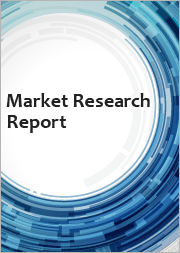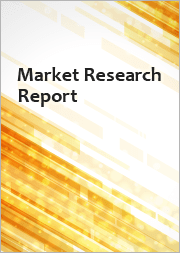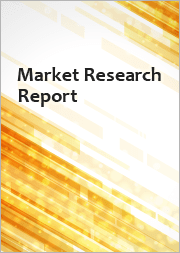
|
시장보고서
상품코드
1403550
세계 화학제품 시장 예측(-2030년) : 유형별, 최종 사용자별, 지역별 분석Chemical Market Forecasts to 2030 - Global Analysis By Type (Specialty Chemicals, Fine Chemicals, Consumer Chemicals, Basic Chemicals and Other Types), End User and By Geography |
||||||
Stratistics MRC에 따르면 세계 화학제품 시장은 2023년에 6,599억 달러를 차지했고 예측 기간 동안 연평균 복합 성장률(CAGR)은 7.1%로 성장했으며 2030년에는 1조 666억 달러에 이를 것으로 예상됩니다.
화학제품은 식품, 석유 및 가스, 섬유, 잉크 첨가제, 건축, 첨가제용 첨가제 등 다양한 분야에 유용합니다. 이들은 단지 하나의 성분으로 구성된 혼합물이거나 고객의 제품이 어떻게 작동하는지에 영향을 미칠 수 있습니다. 이들은 기능과 성능에 따라 사용됩니다.
India Brands Equity Foundation이 발표한 보고서에 따르면 2020년 4월부터 2021년 6월까지 화학 부문에 대한 직접 투자 유입액은 186억 9,000만 달러에 달했습니다.
특수화학제품에 대한 요구 증가
특정 용도에 사용되는 고성능 및 고가치 물질인 특수 화학제품에는 상당한 수요가 있습니다. 이들은 생명공학, 일렉트로닉스, 항공우주 등 특수하고 고급 시장에 자주 공급되고 있습니다. 이러한 분야에 특화된 고도로 전문화된 화학물질의 요구는 기술 향상의 결과로 증가하고 있습니다. 시장은 첨단 재료와 맞춤형 솔루션에 대한 수요가 증가함에 따라 견인되고 있습니다.
환경규제
화학제품 사업과 관련된 환경 규제는 배출물, 폐기물 및 공해 감소를 목표로 점점 더 엄격 해지고 있습니다. 이러한 법률을 준수하기 위해서는 기계, 절차 및 폐기 시스템에 많은 비용이 필요합니다. 기존의 화학제품과 화학 공정은 지속가능성에 대한 우려와 보다 친환경적인 대체품을 추구하는 과제에 직면하고 있습니다. 이것이 시장 확대를 제한하는 요인입니다.
기술 진보
혁신과 기술의 발전은 화학 분야에 큰 영향을 미쳤습니다. 생명공학과 나노기술을 포함한 새로운 제조 기술의 결과로 새로운 상품과 용도가 개발되었습니다. 게다가 촉매, 공정 최적화, 화학 합성 개발로 생산성이 향상되어 새로운 화학제품의 창출에 새로운 길이 열렸습니다. 이들은 시장 확대의 원동력이 되고 있습니다.
원료 가격 변동
천연 가스, 석유 및 기타 기초 광물은 화학제품 부문의 주요 공급원입니다. 화학 공장의 수익성은 특정 원재료 가격 변동에 의해 영향을 받을 수 있습니다. 시장 변동, 수급 역학, 지정학적 긴장은 가격 변동에 영향을 미칠 수 있는 변수의 몇 가지 예입니다. 이것은 시장 확대를 방해하는 주요 측면입니다.
COVID-19의 영향:
COVID-19의 유행으로 인해 세계의 특수 화학제품의 밸류체인이 혼란스러워졌습니다. 화학제품의 생산량과 수요의 감소는 세계의 화학제품 생산 시설의 일시적인 폐쇄와 상품의 운송 제한에 반영되었습니다. 특수화학을 사용하는 섹터 수요는 이러한 재료의 생산과 사용 모두에 큰 영향을 미칩니다.
예측기간 동안 특수화학분야가 최대가 될 전망
예측기간 중 특수화학 분야가 최대가 될 전망입니다. 이는 공정기술의 발전, 무역의 자유화, 전자공학, 수처리, 건축에 사용되는 화학물질에 대한 수요 증가로 인한 것입니다. 기호품이나 향수, 식품·사료 첨가물, 의약품 등의 요구가 높아지고 있는 것도, 이 발전에 기여하고 있습니다. 가공식품 및 음료가 선진산업국에서 일반적으로 됨에 따라 향료에 대한 요구도 높아지고 있습니다.
예측 기간 동안 음식 및 음료 분야의 CAGR이 가장 높을 것으로 예상됩니다.
이 지역의 식품 및 식품 산업은 식품 무역 의존, 세계 선호, 소비자 선호 및 라이프 스타일 변화, 전략적 지리적 위치, 걸프 국가의 식품 프로그램 등 많은 요인에 크게 기여합니다. 또한 향후 몇 년간 이러한 요인이 특수화학제품 수요를 높일 것으로 예상됩니다.
최대 점유율을 차지하는 지역:
북미는 주력과 투자 증가로 예측 기간 동안 최대 시장 점유율을 차지할 것으로 예측됩니다. 온실가스 배출량 감축, 순환형 경제 원칙의 추진, 기존 화학물질의 바이오 베이스 대체품의 채용이 중시되어 지속가능성과 환경 프로젝트의 최전선이 되고 있습니다. 이 시장은 투자 증가, 치열한 경쟁, 여러 화학 제조 사업의 존재와 같은 요인에 의해 견인 될 것으로 예상됩니다.
CAGR이 가장 높은 지역:
아시아태평양은 제조업 증가, 1인당 가처분소득 증가, 자동차, 건설, 전기 및 전자 등 분야의 확대로 예측기간 중 가장 높은 CAGR을 유지할 것으로 예측됩니다. 경제 발전, 산업화, 중요한 최종 이용 산업의 확대가 그 원인입니다. 화학 산업은 다른 주요 화학 생산국보다 빠른 속도로 확대되고 있습니다.
무료 주문을 받아서 만드는 서비스:
이 보고서를 구독하는 고객은 다음 무료 맞춤설정 옵션 중 하나를 사용할 수 있습니다.
- 기업 프로파일
- 추가 시장 기업의 종합적 프로파일링(3개사까지)
- 주요 기업의 SWOT 분석(3개사까지)
- 지역 세분화
- 고객의 관심에 응한 주요국 시장 추계, 예측, CAGR(주: 타당성 확인에 따름)
- 경쟁 벤치마킹
- 제품 포트폴리오, 지리적 존재, 전략적 제휴에 기반한 주요 기업 벤치마킹
목차
제1장 주요 요약
제2장 서문
- 개요
- 이해관계자
- 조사 범위
- 조사 방법
- 데이터 마이닝
- 데이터 분석
- 데이터 검증
- 조사 접근
- 조사 소스
- 1차 조사 소스
- 2차 조사 소스
- 전제조건
제3장 시장 동향 분석
- 성장 촉진요인
- 억제요인
- 기회
- 위협
- 최종 사용자 분석
- 신흥 시장
- COVID-19의 영향
제4장 Porter's Five Forces 분석
- 공급기업의 협상력
- 구매자의 협상력
- 대체품의 위협
- 신규 참가업체의 위협
- 경쟁 기업간 경쟁 관계
제5장 세계의 화학제품 시장 : 유형별
- 특수화학제품
- 정제 화학제품
- 소비자용 화학제품
- 기초화학제품
- 기타 유형
제6장 세계의 화학제품 시장 : 최종 사용자별
- 소비재
- 의약품
- 농약
- 산업용
- 퍼스널케어
- 식품 및 음료
- 건설
- 페인트 및 코팅
- 자동차
- 섬유
- 기타 최종 사용자
제7장 세계의 화학제품 시장 : 지역별
- 북미
- 미국
- 캐나다
- 멕시코
- 유럽
- 독일
- 영국
- 이탈리아
- 프랑스
- 스페인
- 기타 유럽
- 아시아태평양
- 일본
- 중국
- 인도
- 호주
- 뉴질랜드
- 한국
- 기타 아시아태평양
- 남미
- 아르헨티나
- 브라질
- 칠레
- 기타 남미
- 중동 및 아프리카
- 사우디아라비아
- 아랍에미리트(UAE)
- 카타르
- 남아프리카
- 기타 중동 및 아프리카
제8장 주요 발전
- 계약, 파트너십, 협업, 합작투자(JV)
- 인수와 합병
- 신제품 발매
- 사업 확대
- 기타 주요 전략
제9장 기업 프로파일
- BASF SE
- Dow Chemical Company
- EChemicalonMobil
- DuPont de Nemours, Inc.
- Linde plc
- Bayer AG
- Mitsubishi Chemical Corporation
- Eastman Chemical Company
- Evonik Industries
- Clariant
- Lanxess
- Air Products and Chemicals, Inc.
- Borealis AG
- LyondellBasell
- SABIC
- 3M Company
- Ansell Limited
According to Stratistics MRC, the Global Chemical Market is accounted for $659.9 billion in 2023 and is expected to reach $1066.6 billion by 2030 growing at a CAGR of 7.1% during the forecast period. Chemical goods are those that help a variety of sectors that they serve, including food, oil and gas, textiles, ink additives, construction, and additives for additives. These may be mixtures made up of just one ingredient or things whose makeup affects how well the customer's product works. They are used in accordance with their functionality and performance.
According to a report published by India Brands Equity Foundation, the FDI inflows in the chemical sector reached $18.69 billion from April 2020 and June 2021.
Market Dynamics:
Driver:
Growing need for specialty chemicals
There is a considerable demand for specialty chemicals, which are high-performance, high-value substances employed in certain applications. These frequently serve specialized and sophisticated markets including biotechnology, electronics, and aerospace. The need for highly specialized chemicals made specifically for these sectors is rising as a result of technological improvements. The market is driven by the growing demand for cutting-edge materials and customized solutions.
Restraint:
Environmental regulations
Environmental rules pertaining to the chemicals business are getting more and more strict with the goal of lowering emissions, waste, and pollution. Adherence to these laws necessitates substantial expenditures on machinery, procedures, and disposal systems. Traditional chemical products and processes also face challenges from sustainability concerns and the quest for greener alternatives. These are the factors that are limiting the market's expansion.
Opportunity:
Advances in technology
Innovation and technological advancements have had a big influence on the chemicals sector. Novel goods and applications have been developed as a result of new manufacturing techniques including biotechnology and nanotechnology. Furthermore, developments in catalysts, process optimization, and chemical synthesis have increased productivity and opened up new avenues for the creation of novel chemical products. These are the driving forces behind the market's expansion.
Threat:
Volatility in raw material prices
Natural gas, petroleum, and other basic minerals are major sources of supply for the chemicals sector. The profitability of chemical factories may be impacted by changes in the price of certain raw materials. Market fluctuations, supply-demand dynamics, and geopolitical tensions are a few examples of the variables that might affect price volatility. This is the main aspect holding back the market's expansion.
COVID-19 Impact:
The global specialty chemicals value chain has been disrupted as a result of the COVID-19 epidemic. A decline in chemical output and demand was reflected in the temporary closure of chemical production facilities across the world and the limitations placed on the transit of commodities. The demand from sectors that employ specialized chemicals heavily influences both production and use of these materials.
The specialty chemicals segment is expected to be the largest during the forecast period
The specialty chemicals segment is expected to be the largest during the forecast period. This is ascribed to developments in process technology, trade liberalization, and the rising demand for chemicals used in electronics, water treatment, and building. The increasing need for tastes and perfumes, food and feed additives, medications, and other items is also credited with the development. As processed foods and drinks have grown more common in industrialized countries, there has been a rise in the need for flavoring agents.
The food & beverage segment is expected to have the highest CAGR during the forecast period
The food & beverage segment is expected to have the highest CAGR during the forecast period. wth of the food and beverage industry in the region has been largely attributed to a number of factors, including reliance on food trade, global tastes, shifting consumer preferences and lifestyles, strategic geographic location, and Gulf food programs. It is also anticipated that these factors will drive demand for specialty chemicals over the anticipated years.
Region with largest share:
North America is projected to hold the largest market share during the forecast period owing to the increasing focus and investments. With a growing emphasis on lowering greenhouse gas emissions, advancing circular economy principles, and embracing bio-based alternatives to conventional chemicals, it has been at the forefront of sustainability and environmental projects. The market is expected to be driven by factors including increased investments, fierce rivalry, and the presence of several chemical manufacturing businesses.
Region with highest CAGR:
Asia Pacific is projected to hold the highest CAGR over the forecast period due to the rise in manufacturing activities, rise in per capita disposable income, expansion of sectors such as automotive, construction and electrical and electronics. Economic development, industrialization, and the expansion of significant end-use industries are blamed for this. The chemical industry is expanding at a faster rate than other major chemical-producing nations.
Key players in the market:
Some of the key players in Chemical market include BASF SE, Dow Chemical Company, EChemicalonMobil, DuPont de Nemours, Inc., Linde plc, Bayer AG, Mitsubishi Chemical Corporation, Eastman Chemical Company, Evonik Industries, Clariant, Lanxess, Air Products and Chemicals, Inc., Borealis AG, LyondellBasell, SABIC , 3M Company and Ansell Limited.
Key Developments:
In June 2023, Avient Corporation and BASF SE have collaborated to offer colored grades of Ultrason high-performance polymers to the global market.
In December 2022, Clariant AG announced to strengthen its position in China and expand its care chemicals facility in the country, including pharmaceutical, personal care, home care, and industrial applications. The company provides care chemicals under its specialty segment.
In April 2022, Evonik invested in increasing production capacity for isobutene derivatives at its Marl location by 50%5. The isobutene part of the C4 production network produces the petrochemical specialties Tertiary Butanol (TBA), Di- isobutene (DiB), and 3,5,5 Trimethylhexanal (TMH).
Types Covered:
- Specialty Chemicals
- Fine Chemicals
- Consumer Chemicals
- Basic Chemicals
- Other Types
End Users Covered:
- Consumer Goods
- Pharmaceuticals
- Agrochemicals
- Industrial
- Personal Care
- Food & Beverage
- Construction
- Paints and Coatings
- Automotive
- Textiles
- Other End Users
Regions Covered:
- North America
- US
- Canada
- Mexico
- Europe
- Germany
- UK
- Italy
- France
- Spain
- Rest of Europe
- Asia Pacific
- Japan
- China
- India
- Australia
- New Zealand
- South Korea
- Rest of Asia Pacific
- South America
- Argentina
- Brazil
- Chile
- Rest of South America
- Middle East & Africa
- Saudi Arabia
- UAE
- Qatar
- South Africa
- Rest of Middle East & Africa
What our report offers:
- Market share assessments for the regional and country-level segments
- Strategic recommendations for the new entrants
- Covers Market data for the years 2021, 2022, 2023, 2026, and 2030
- Market Trends (Drivers, Constraints, Opportunities, Threats, Challenges, Investment Opportunities, and recommendations)
- Strategic recommendations in key business segments based on the market estimations
- Competitive landscaping mapping the key common trends
- Company profiling with detailed strategies, financials, and recent developments
- Supply chain trends mapping the latest technological advancements
Free Customization Offerings:
All the customers of this report will be entitled to receive one of the following free customization options::
- Company Profiling
- Comprehensive profiling of additional market players (up to 3)
- SWOT Analysis of key players (up to 3)
- Regional Segmentation
- Market estimations, Forecasts and CAGR of any prominent country as per the client's interest (Note: Depends on feasibility check)
- Competitive Benchmarking
- Benchmarking of key players based on product portfolio, geographical presence, and strategic alliances
Table of Contents
1 Executive Summary
2 Preface
- 2.1 Abstract
- 2.2 Stake Holders
- 2.3 Research Scope
- 2.4 Research Methodology
- 2.4.1 Data Mining
- 2.4.2 Data Analysis
- 2.4.3 Data Validation
- 2.4.4 Research Approach
- 2.5 Research Sources
- 2.5.1 Primary Research Sources
- 2.5.2 Secondary Research Sources
- 2.5.3 Assumptions
3 Market Trend Analysis
- 3.1 Introduction
- 3.2 Drivers
- 3.3 Restraints
- 3.4 Opportunities
- 3.5 Threats
- 3.6 End User Analysis
- 3.7 Emerging Markets
- 3.8 Impact of Covid-19
4 Porters Five Force Analysis
- 4.1 Bargaining power of suppliers
- 4.2 Bargaining power of buyers
- 4.3 Threat of substitutes
- 4.4 Threat of new entrants
- 4.5 Competitive rivalry
5 Global Chemical Market, By Type
- 5.1 Introduction
- 5.2 Specialty Chemicals
- 5.3 Fine Chemicals
- 5.4 Consumer Chemicals
- 5.5 Basic Chemicals
- 5.6 Other Types
6 Global Chemical Market, By End User
- 6.1 Introduction
- 6.2 Consumer Goods
- 6.3 Pharmaceuticals
- 6.4 Agrochemicals
- 6.5 Industrial
- 6.6 Personal Care
- 6.7 Food & Beverage
- 6.8 Construction
- 6.9 Paints and Coatings
- 6.10 Automotive
- 6.11 Textiles
- 6.12 Other End Users
7 Global Chemical Market, By Geography
- 7.1 Introduction
- 7.2 North America
- 7.2.1 US
- 7.2.2 Canada
- 7.2.3 Mexico
- 7.3 Europe
- 7.3.1 Germany
- 7.3.2 UK
- 7.3.3 Italy
- 7.3.4 France
- 7.3.5 Spain
- 7.3.6 Rest of Europe
- 7.4 Asia Pacific
- 7.4.1 Japan
- 7.4.2 China
- 7.4.3 India
- 7.4.4 Australia
- 7.4.5 New Zealand
- 7.4.6 South Korea
- 7.4.7 Rest of Asia Pacific
- 7.5 South America
- 7.5.1 Argentina
- 7.5.2 Brazil
- 7.5.3 Chile
- 7.5.4 Rest of South America
- 7.6 Middle East & Africa
- 7.6.1 Saudi Arabia
- 7.6.2 UAE
- 7.6.3 Qatar
- 7.6.4 South Africa
- 7.6.5 Rest of Middle East & Africa
8 Key Developments
- 8.1 Agreements, Partnerships, Collaborations and Joint Ventures
- 8.2 Acquisitions & Mergers
- 8.3 New Product Launch
- 8.4 Expansions
- 8.5 Other Key Strategies
9 Company Profiling
- 9.1 BASF SE
- 9.2 Dow Chemical Company
- 9.3 EChemicalonMobil
- 9.4 DuPont de Nemours, Inc.
- 9.5 Linde plc
- 9.6 Bayer AG
- 9.7 Mitsubishi Chemical Corporation
- 9.8 Eastman Chemical Company
- 9.9 Evonik Industries
- 9.10 Clariant
- 9.11 Lanxess
- 9.12 Air Products and Chemicals, Inc.
- 9.13 Borealis AG
- 9.14 LyondellBasell
- 9.15 SABIC
- 9.16 3M Company
- 9.17 Ansell Limited







